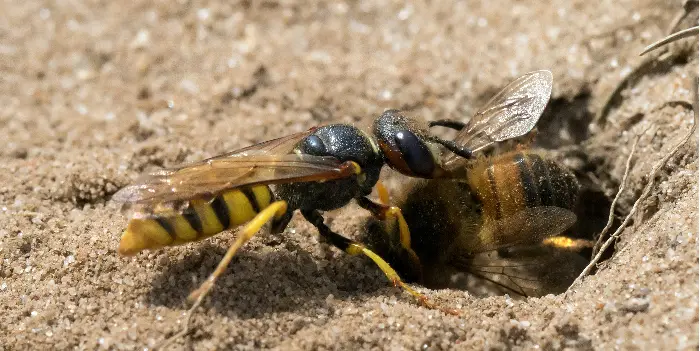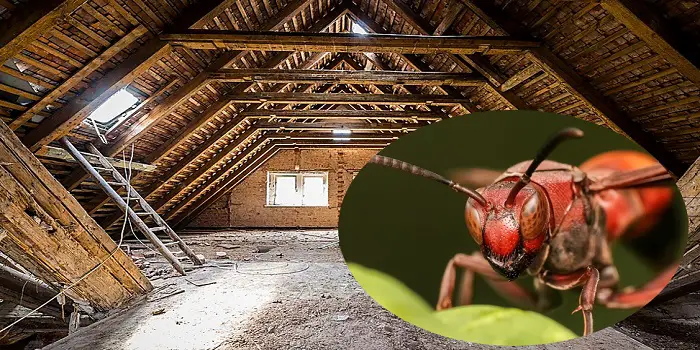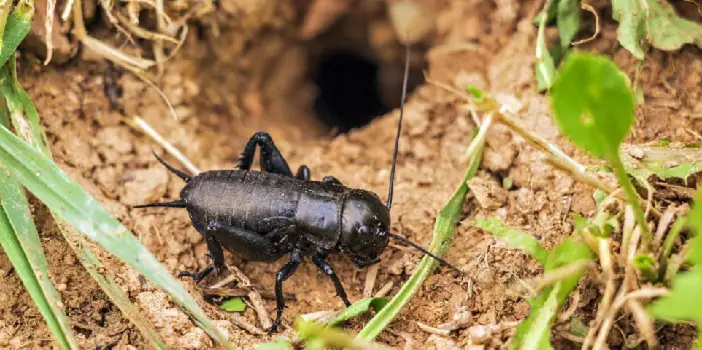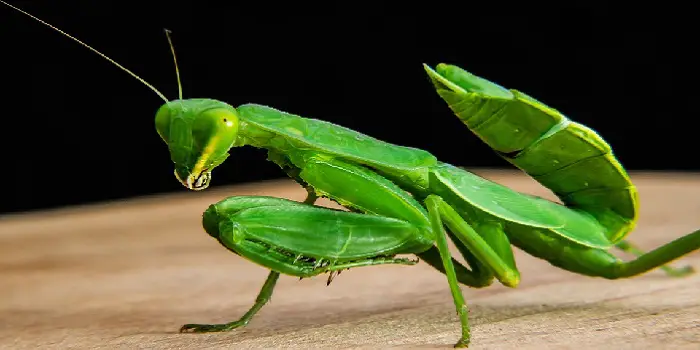
Insects of most all types are generally not welcome in the home.
Although many insects are harmless in the sense that they do not damage the structure of the house or bring in germs or diseases.
Their presence is generally enough to cause disruption, which means you have to get rid of them.
One of the more exciting insects is the praying mantis.
This insect is quite distinctive in appearance, and its behavior is well-noted also.
If you have praying mantis inside your home, it pays to know what they are and what they do before you eliminate them.
What is a Praying Mantis?
The praying mantis is part of the Mantidae family and is also called mamboreta or Santa Teresa.
However, its most common name is the praying mantis due to how the insect holds its front legs in a praying fashion.
The praying mantis originally came from the Asian, North African, and European areas, but they have quickly spread worldwide.
Its basic characteristics, aside from its large front legs, include the following.
- Long, thin body
- Triangular-shaped head
- Large, protruding eyes
- Small blades on the front legs
Although the praying mantis may be of several different colors, the most common are green and brown.
The color scheme helps to camouflage them in their environment and is created during their last molting period to match their surroundings.
So, if you see a bright green mantis, chances are it molted during a time in which there was fresh grass around.
There are about 2,400 species of praying mantis around which is quite a few.
Some of the more common include the following.
- African
- Budwing
- Dead Leaf
- Giant Asian
- Orchid
Unless it is mating season, the praying mantis is generally seen alone.
They are active during daylight hours, and during mating season, the female will consume the male shortly after the mating is complete.
You will most likely see a praying mantis if you live in a temperate zone.
As long as there is vegetation, you will probably find a praying mantis around.
They can also be found in forested areas, though they prefer vegetation.
This is because the behavior of the praying mantis means it will be around food sources, especially if there are other insects or spiders around.
Chances are if you have a garden, there is a praying mantis somewhere in or near the area.
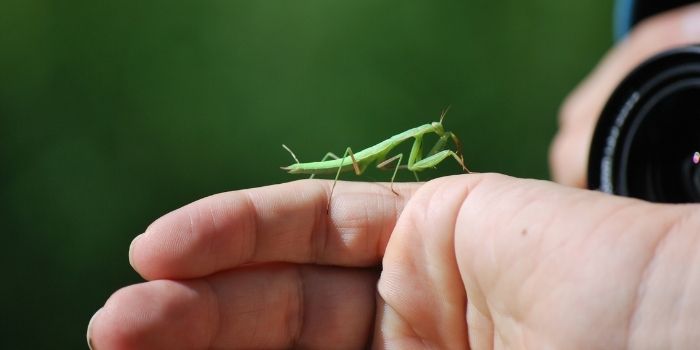
Is Praying Mantis Dangerous?
Despite their reputation, the praying mantis does not bother humans.
It is considered a harmless insect, and you can safely be around them most of the time.
However, if they feel threatened by you, they may act aggressively.
This means that they will try to either bit or scratch you with their legs. The result may be a few marks and some painful scratches.
However, they do not carry any poison, so apart from the marks they leave, you are not in danger if attacked by a praying mantis.
They are most likely to be aggressive if picked up or handled, so it is best to simply observe them from a distance.
While they present no risk to humans, their food source is other insects.
Many who have gardens prefer having the praying mantis inside to eat the insects that otherwise would eat their plants.
It is a natural mechanism that does not harm the plants, but the mantis does get rid of harmful insects.
A typical adult may consume up to 25 flies per day.
And since flies may carry germs, bacteria, or disease, the mantis is reducing this threat by reducing its population around your garden.
When does Praying Mantis Come Out?
You will see the praying mantis come out during the daytime hours.
This is because they hunt by sight, and since their food source can only be seen in the daytime, that’s when you see them out and about.
At night they tend to remain inactive and usually in a safe place away from predators if possible.
In addition, you may see them during mating season, which is the only time you will find more than one in the same place.
Like many predators, the praying mantis generally lives alone and has its own space or territory where they hunt other insects.
While the praying mantis is harmless, there are rare times in which you may want to get rid of them.
This is mostly the case when the mantis has come inside the home or presents a threat to something else that you want to keep around.
If this is the case, then you will need to remove them from the area.
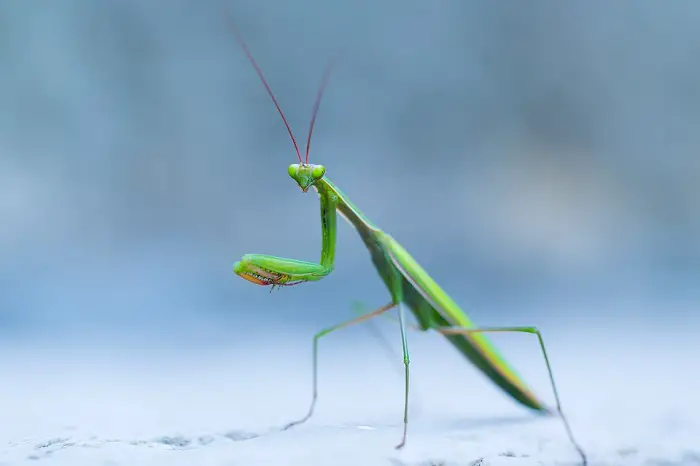
How to Get Rid of Praying Mantis? (Different Methods)
The good news is that you will normally need to remove only one praying mantis as they operate alone.
Only if you find a nest of young mantis will you need to remove more of them.
But since that is rare, in most cases, it will be a single mantis you want to get rid of from your residence.
1- Birds
The most threatening enemy that the praying mantis has is birds.
Robins, larks, nightingales, and thrushes love to feed on the praying mantis and a wide variety of insects as well.
By keeping them around your yard, the slow-moving mantis will be a relatively easy catch for them.
You can also consider placing bird feeders around, which will attract the predator birds to come and prey on these insects naturally.
2- Pick Up & Move
The simplest and arguably most effective method is to simply pick up the mantis, place it in a box, and release it in another location.
Since the praying mantis tends not to move quickly, catching it is not much of an issue.
- Have a small box, such as a shoe box, ready
- Pick up the mantis, place it inside the box, and close the lid
- Now, take the mantis to a location where it can be released, or if you prefer, you can kill it
The best place to relocate them is a garden where it can eliminate more harmful insects.
If that is not possible, then taking it to a place outdoors well away from your home means it is highly unlikely to find its way back inside.
You may want to wear gloves and use tweezers to pick up the mantis.
The gloves will protect your skin if the mantis wants to scratch or bite you.
However, care should be taken as like virtually all insects the mantis can be crushed simply by the pressure applied by the hands or tweezers.
3- Beer Repellent
If you have a can of beer around, you have an effective insect repellent when combined with other common items.
This repellent consists of the following.
- Beer
- Epsom Salts
- Mouthwash
- Yeast
Place equal parts of all four items in a spray bottle, and spray them around the area where you want to repel the praying mantis.
It’s quite powerful and will last for a while, although you will need to respray it from time to time.
4- Nettle Purine
Another simple repellent is nettle purine.
This is quite good at keeping most insects away.
All you need is a bowl that is non-metallic, 100 grams of nettles, and 10 liters of water.
Mix the water and nettles into the bowl and let sit for 48 hours.
Then strain the nettles while pouring the liquid into a spray bottle.
Spray the area where you want to repel the insects, and that is it.
Because it keeps most insects away, that will keep the praying mantis away.
5- Turmeric
This spice can be used in its dry form to repel insects.
Turmeric works because of the curcumin that it contains, which causes many different types of bugs to suffocate.
Simply sprinkle the turmeric in the place you want to protect.
The result will be that the mantis will have no food source and will find greener pastures with no turmeric to feed.
6- Soap & Water
If you want to keep the mantis and many other insects away from your home, mix a little soap and water and put it inside a spray bottle.
Spray the plants and grass around your home.
The soap does not harm the plants, but it does keep away insects like the mantis.
It also repels other bugs and beetles from the area.
The soap and water work indirectly in keeping the praying mantis away because it repels their food source.
When there are no insects around for the mantis to feed on, it moves to other places.
The only downside is that you will have to spray the area every few days or once a week to keep the insects away.
Otherwise, the soap and water dry quickly, and the insects will return.

Can a Praying Mantis Spit on You?
While many believe that a praying mantis can spit poison at you and can make you blind – it’s not true.
Unlike walking stick insects that can spit defensive spray in your eyes, praying mantises are insects that are relatively harmless and not poisonous.
They can only bite/scratch you if you feel threatened or try to mess with them.
The only venomous insects that are known to spit painful liquid substances from their bodies as a defense mechanism are species of ground beetles and sugar ants.
Can You Have Praying Mantis as a Pet at Home?
Depending on the culture, seeing a praying mantis is many times considered a sign of good luck or bad luck.
Some Christians also believe that a praying mantis in your home symbolizes a spiritual meaning that angels are watching over you.
For this reason, many people consider keeping a praying mantis in their home as a pet.
If you plan to keep them as pets to enjoy watching their fascinating activities, make sure you know more about them, like what they eat, what kind of terrarium to use, etc.
With some simple equipment, patience, and practice, these insects can be very easy to keep as your lovely pets.
Other Related Questions:
Can praying mantis kill hummingbirds?
While this is completely rare, there are reports in the past where praying mantises tried to prey upon smaller birds like hummingbirds.
The report also showed that 12 different species of mantids killed and ate 24 different species of birds, which includes seven species of hummingbirds.
Do praying mantis lay eggs or give birth?
An adult female praying mantises lays rounded eggs that are tan to white.
These eggs are often packed in a sac and are laid on twigs or stems. You can also find them on walls, fences, house siding, and eaves.
An interesting behavior of female praying mantises here is they eat the head of the male mantis when mating, as the activity tends to reduce his sex drive.
After the mating is complete female mantis also eats the rest of the male’s body.
How far can a praying mantis turn its head?
Mantids can turn their triangular heads 180 degrees which are balanced on a long elongated thorax or neck.
Due to the ability to rotate their head this way, they are capable of scanning their surroundings with the help of two large compound eyes and three other simple eyes located between them.
The Conclusion
While there are several ways to get rid of a praying mantis, keep in mind that the insect is quite beneficial if you have a garden.
They will not do any harm to the plants, but they will feast on the insects that damage them.
Since they are great at hunting and have a very big appetite, they will eat away all the dead bugs, mosquitoes, roaches, flies, moths, and woolly aphids in the field/garden.
IMHO, it’s therefore good not to kill them even if it’s not illegal.
Rather choose the method that can help keep them away from your home in a most organic way.
Share the post "How to Catch and Get Rid of a Praying Mantis in Your House?"

Welcome to ProShieldPest.com. I am Tina Jones. I have been working as a pest removal professional in Winslow, Arizona lately. At present, I love to spend my time with my family as a retiree.
Here I share all my knowledge and experiences to help people understand better how they can stop pests at their homes without actually killing them. Hopefully, the information you will find here will help in safeguarding your home! You can check more about me here.


